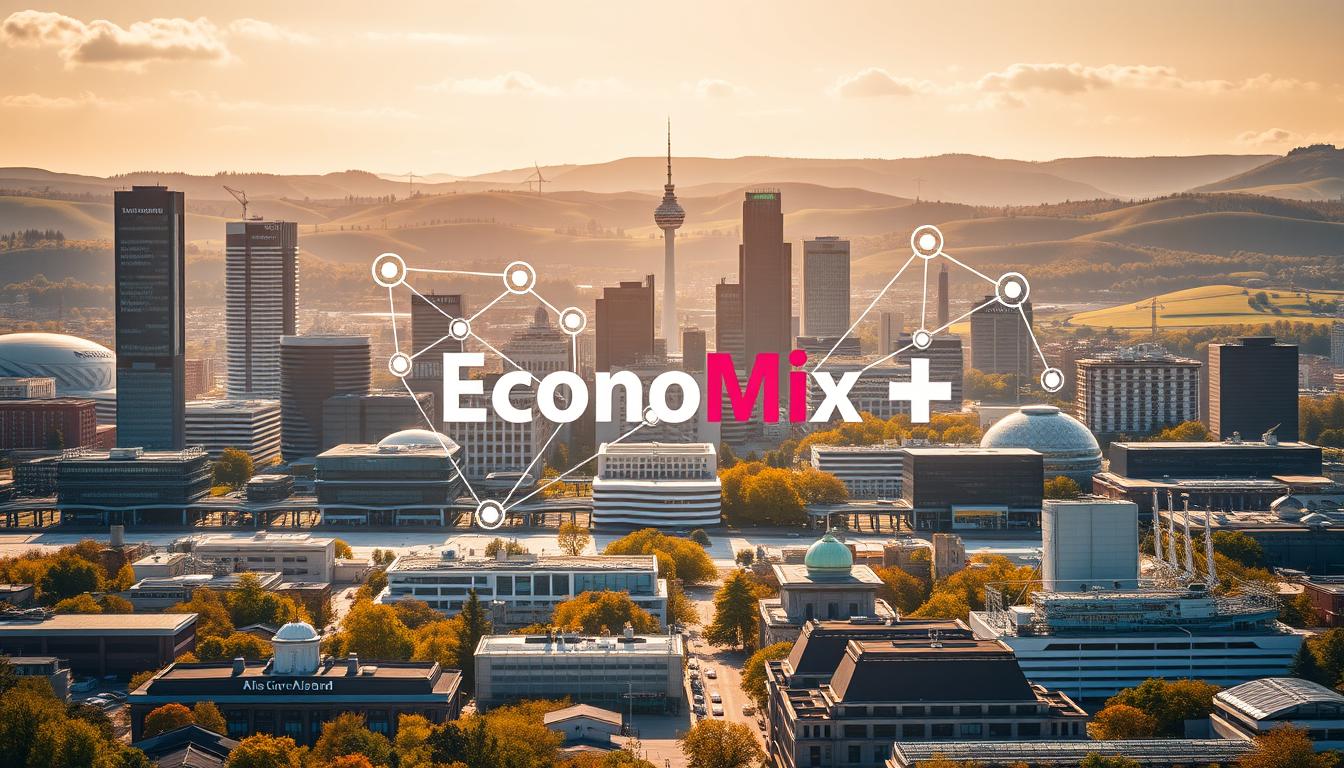In the 1990s, Finland faced a severe economic crisis. Fast forward to today, and the country ranks among the world’s most competitive economies. This transformation didn’t happen by chance. Strategic investments in research and development, now at 3.5% of GDP, the highest in the EU, played a crucial role.
High-tech exports surged from 5% to 20% of total exports, showcasing the nation’s shift toward a knowledge-based economy. The World Bank has recognized Finland’s innovative approach, balancing a robust welfare state with economic competitiveness. Structural reforms and a focus on education have been key drivers of this success.
Finland’s education system consistently tops global rankings, like PISA, fostering a skilled workforce that meets the part-time interest of various members in the job market. Companies like Nokia, once holding 35% of the global telecom market, have also contributed to this growth and improvement. These advancements have not only boosted the economy but also reduced social inequality, proving that technology and social justice can go hand in hand, showcasing the power of effective systems and the results of strategic investments.Key Takeaways
Finland transformed from economic crisis to global competitiveness leader.
- R&D spending is the highest in the EU at 3.5% of GDP.
- High-tech exports grew significantly, reaching 20% of total exports.
- Structural reforms balanced welfare with economic growth.
- Finland’s education system consistently ranks top globally.
- Technological advancements have reduced social inequality.
Introduction: Finland’s Remarkable Transformation
The 1990s marked a challenging period for Finland’s economy. Unemployment soared to 18%, and the banking sector collapsed. Yet, within a decade, the nation emerged as a global leader in innovation and competitiveness. This transformation was driven by strategic reforms and a focus on long-term planning.
From Economic Crisis to Global Leader
By 2004, Finland ranked as the world’s most competitive economy. This turnaround was fueled by a tripling of R&D investments since the crisis years. The government prioritized innovation, establishing the Science and Technology Council chaired by the Prime Minister. This council played a pivotal role in shaping policies that balanced economic growth with social equity.
Parliamentary education programs fostered consensus-building, ensuring that reforms were widely supported. Mobile technology adoption became a cornerstone of social inclusion, bridging gaps in access to knowledge and resources over the years. These efforts laid the foundation for a resilient and inclusive economy, reflecting decisions made in the united states regarding research development and educational systems.The Role of Technology and Social Justice
Finland’s welfare policies enabled risk-taking in the tech sector, creating new opportunities for innovation. The World Bank’s four-pillar framework was adopted to guide economic development. This approach emphasized education, innovation, infrastructure, and institutional efficiency.
The table below highlights key milestones in Finland’s transformation:
| Year | Milestone |
|---|---|
| 1990s | Economic crisis with 18% unemployment |
| 2004 | Ranked #1 in global competitiveness |
| Present | Leader in innovation and social inclusion |
Through these efforts, Finland has shown that economic growth and social justice can coexist. The nation’s journey serves as an inspiring example of resilience and forward-thinking governance.
The Foundations of Finland’s Success
Education and innovation became the cornerstones of Finland’s success story. The nation’s ability to transform its economy and society was rooted in strategic reforms and forward-thinking policies. By focusing on long-term planning, Finland created a model that balanced economic growth with social equity.
Economic and Institutional Reforms
In the 1980s, Finland began implementing significant economic and institutional changes. These reforms aimed to decentralize decision-making and foster self-evaluation systems in education. By 1994, a decentralized curriculum design was introduced, giving schools greater autonomy.
Public-private partnerships also played a crucial role. Tech clusters emerged, driving innovation and creating new opportunities for students. These collaborations were guided by Michael Porter’s economic development phases, ensuring that decisions were made within structured systems that have evolved over the years, all while emphasizing research development and a structured approach to growth.
Investment in Education and Innovation
Finland’s commitment to education is evident in its impressive statistics. Today, 80% of adults hold upper secondary diplomas, compared to just 30% in 1970. This focus on education has equipped the workforce with the skills needed for a knowledge-based economy.
Competitive R&D funding increased from 1.9% to 3.5% of GDP, reflecting the nation’s dedication to research and development. Programs like Business Finland’s ICT 2023 initiative have further supported technological advancements.
Teacher autonomy has been a key factor in the success of Finland’s education system. This approach has consistently placed the country at the top of global rankings, such as PISA. By empowering educators, Finland has created a culture of excellence and innovation.
How Did Finland Succeed in Merging Technology with Social Justice?
Finland’s ability to merge technology and equity stems from its four-pillar framework. This approach, inspired by the World Bank’s model, focuses on economic institutions, education, innovation, and IT infrastructure. By balancing these elements, Finland has created a sustainable and inclusive system.

The Four Pillars of a Knowledge-Based Economy
Finland’s success is built on four key pillars. First, strong economic institutions ensure stability and growth. Second, a world-class education system fosters a skilled workforce, preparing students with the necessary information and technologies. Third, innovation drives technological advancements, making informed decisions over time. Finally, robust IT infrastructure supports connectivity and access, which is a vital part of these systems.
For example, the AuroraAI program integrates ethical AI frameworks into public services. This initiative ensures that technology benefits all citizens. Similarly, the Finnish Center for Artificial Intelligence (FCAI) promotes open data initiatives, encouraging collaboration and transparency.
Balancing Public and Private Investments
Finland’s government has strategically balanced public and private investments. With an R&D budget of €54 billion, the nation outpaces many others. For instance, Finland spends 3.5% of its GDP on research, compared to the U.S.’s 2.8%.
This funding supports both competitive and institutional projects. Nokia’s tech cluster dynamics highlight the success of public-private partnerships. These collaborations have created new opportunities and driven economic growth.
By prioritizing long-term planning, Finland has built a resilient state that balances innovation with social equity. This model serves as an inspiring example for nations worldwide.
Education Reforms: A Key Driver of Change
Finland’s education reforms have set a global benchmark for excellence. Starting in the 1960s, the nation transitioned from a two-tier system to a comprehensive model. This shift emphasized equality and quality, ensuring every student had access to top-tier education.

Municipalities were granted autonomy in curriculum design, allowing them to tailor programs to local needs and incorporate new technologies and information systems.
This flexibility fostered innovation and creativity in teaching methods. Teachers were empowered to focus on developing students’ skills rather than preparing them for standardized tests, making decisions that address the evolving needs of students in a global context, including comparisons to the united states.
Comprehensive School System
The elimination of standardized testing was a bold move. Instead, Finland prioritized continuous assessment and holistic learning. This approach reduced stress and encouraged a love for learning among students.
Finland’s education system consistently ranks at the top of global surveys. From 2000 to 2009, it ranked #1 in reading and science and #2 in math in the PISA assessments. These results reflect the system’s focus on equity and high performance.
Focus on Equality and Quality
The OECD Adult Skills Survey further highlights Finland’s success. The nation’s adults consistently score among the highest in literacy and problem-solving. This achievement underscores the long-term impact of its reforms.
Education equity has also driven economic mobility. By providing equal opportunities, Finland has created a society where talent thrives regardless of background. As Olli Luukkainen, President of the Finnish Teachers’ Union, noted, “Respect for teachers is the cornerstone of our system.”
- Transitioned from a two-tier to a comprehensive education model.
- Granted municipalities autonomy in curriculum design.
- Eliminated standardized testing for holistic learning.
- Ranked #1 in reading and science in PISA (2000-2009).
- Adults excel in OECD Adult Skills Survey rankings.
- Education equity fosters economic mobility.
Innovation Systems: Fueling Economic Growth
High-tech exports and research investments have reshaped Finland’s economic landscape. Over the past 15 years, high-tech exports grew by 400%, now accounting for over 50% of manufacturing. This shift highlights the nation’s transition to a knowledge-driven economy.

Deregulation of the telecom market played a pivotal role in this transformation. It allowed companies like Nokia to thrive, creating a robust supply chain ecosystem that provided vital information and advanced technologies to students and industries alike. At its peak, Nokia contributed 4% to Finland’s GDP, showcasing the impact of strategic policies.
R&D Investments and High-Tech Exports
Finland’s commitment to development is evident in its R&D spending. Partnerships with institutions like the VTT Technical Research Centre have driven innovation. These collaborations have led to breakthroughs in niche markets, such as the pulse-rate meter industry.
Cluster-based strategies have also been key. By fostering collaboration between industries, Finland has created a dynamic environment for technologies to flourish. This approach contrasts with the volatility seen in traditional sectors like forestry.
The Role of Nokia in Finland’s Tech Boom
Nokia’s rise was a defining moment for Finland’s tech sector. Its supply chain ecosystem supported thousands of jobs and spurred innovation. “Nokia’s success was not just about the company but the entire ecosystem it built,” notes a local economist.

- Public-private partnerships further amplified this growth. Programs like Business Finland’s ICT 2023 initiative ensured that innovation and new technologies remained a national priority. These efforts have cemented Finland’s position as a global leader in technological information systems and success, showcasing the need for students and industries to be part of this dynamic ecosystem.success.High-tech exports grew 400% in 15 years.
- Nokia contributed 4% to Finland’s GDP at its peak.
- Cluster-based strategies fostered innovation.
- VTT Technical Research Centre partnerships drove breakthroughs.
- Pulse-rate meter niche market exemplifies success.
Government Policies: Enabling Structural Change
Strategic government policies have been pivotal in shaping Finland’s economic and social landscape. By focusing on long-term planning and consensus building, the nation has created a resilient framework for growth and equity.
One key initiative is the Science and Technology Council (STC), chaired by the Prime Minister and including the Finance and Education Ministers. This council ensures that institutions work together to achieve national goals.
Long-Term Planning and Consensus Building
Finland’s approach to policy formulation involves a “shadow government” system. This method allows experts to draft policies before they are debated in Parliament. It ensures that decisions are well-informed and widely supported.
The country has also committed to increasing its EU R&D budget by 50%. This investment reflects Finland’s dedication to innovation and its role as a leader in technological advancements.
The Science and Technology Council
The STC plays a crucial role in aligning economic policies with social equity. For example, the AI 4.0 program supports small and medium-sized enterprises (SMEs) in adopting cutting-edge technologies and systems. This initiative bridges the gap between innovation and practical application, ensuring that decisions made in the United States and beyond are informed by the latest information and time-tested strategies.
Manuel Castells’ welfare-security thesis underscores the importance of balancing economic growth with social protection. Finland’s policies embody this principle, ensuring that technological progress benefits all citizens.
- The Information Management Board oversees data-driven decision-making.
- Political consensus on the euro adoption strengthened economic stability.
- 25-year economic policy education programs for MPs ensure continuity in reforms.
Through these efforts, Finland has demonstrated how strategic support from the government can drive meaningful structural change.
The Welfare State: A Model for Social Justice
Finland’s welfare state stands as a beacon of social equity and economic resilience. Rooted in the Nordic model, it emphasizes universal access to essential services like healthcare and education. This approach ensures that every citizen, regardless of background, has the support needed to thrive.

The system is built on trust and fairness. With a Gini coefficient of 26.6, Finland boasts one of the lowest income inequality rates globally. Over 80% of its people trust government institutions, reflecting the effectiveness of its policies. Universal healthcare, funded by 9.6% of GDP, is a cornerstone of this model.
Nordic Welfare Model
The Nordic welfare model prioritizes equality and inclusivity. It contrasts sharply with systems in countries like the U.S., where social mobility rates are significantly lower. Finland’s approach ensures that every individual, including students, has access to opportunities and the necessary information to make informed decisions, fostering a society where talent and hard work determine success over time.
Gender-neutral parental leave policies further highlight Finland’s commitment to equality. These measures not only empower families but also contribute to a more balanced workforce. As noted in the Washington Post, Finland’s national project is a testament to its dedication to fairness and innovation.
Combining Competitiveness with Social Equity
Finland’s welfare state doesn’t just focus on social justice; it also drives economic growth. Anti-corruption measures have created a transparent environment, encouraging entrepreneurial risk-taking. This balance between competitiveness and equity has made Finland a global leader in both innovation and social inclusion.
The state’s “twin transition” policies, integrating digital and green initiatives, showcase its forward-thinking approach. By aligning economic goals with environmental sustainability, Finland ensures long-term prosperity for its people. This model serves as an inspiring example for nations striving to merge growth with fairness.
Lessons from Finland’s Education System
Finland’s education system is often hailed as a global model for excellence. Its unique approach focuses on equity, quality, and teacher autonomy. These principles have consistently placed the country at the top of international rankings like PISA.
Teacher Autonomy and Respect
Teachers in Finland enjoy unparalleled respect and autonomy. They spend four hours daily teaching and two hours planning, ensuring a balanced workload. All teachers must hold a master’s degree, reflecting the system’s emphasis on high skills and professionalism.
The teacher-student ratio is an impressive 1:13, allowing personalized attention. Phenomenon-based learning encourages students to explore real-world problems, fostering critical thinking. Special education inclusion rates stand at 30%, ensuring no child is left behind.
As Pasi Sahlberg notes in Finnish Lessons,
“Respect for teachers is the cornerstone of Finland’s education success.”
International Recognition and PISA Success
Finland’s education system has consistently topped the PISA rankings. This achievement is rooted in its focus on equity and holistic development. Unlike systems that rely on standardized testing, Finland prioritizes continuous assessment and student well-being.
The table below compares teacher salaries in Finland and the U.S., highlighting the value placed on educators:
| Country | Average Teacher Salary (USD) |
|---|---|
| Finland | 50,000 |
| United States | 40,000 |
Finland’s approach demonstrates that investing in teachers and prioritizing equity leads to exceptional performance and success. Its model offers valuable lessons for nations striving to improve their education systems.
Finland’s Approach to Digital Transformation
Finland’s digital transformation has set a global standard for innovation and ethics. By integrating advanced technologies with a focus on social equity, the nation has created a model that balances progress with responsibility. This approach is evident in its commitment to open data and ethical AI.
Open Data and Ethical AI
Finland’s open data initiatives ensure transparency and accessibility. The AuroraAI network, launched in 2020, is a prime example. It integrates ethical AI frameworks into public services, ensuring that decisions are fair and unbiased for all students. This aligns with GDPR compliance, setting a benchmark for responsible AI deployment in information systems.The Finnish Center for Artificial Intelligence (FCAI) has also played a key role. Its ethical AI guidelines emphasize transparency, accountability, and inclusivity.
These principles are embedded in the nation’s 11-point AI 4.0 action plan, which aims to position Finland as a leader in AI development by 2030.
Government Initiatives in AI Development
The government has been instrumental in driving Finland’s AI advancements. Initiatives like the SFS/SR 315 AI standardization group ensure that AI technologies meet rigorous ethical and technical standards. This group works closely with industry leaders to promote innovation while safeguarding public trust.
Public sector AI use cases further highlight Finland’s commitment. From healthcare to education, AI technologies are being used to enhance services and improve efficiency. For instance, automated decision-making tools are deployed within legal limits, ensuring they complement human judgment rather than replace it, providing valuable information for students and educators alike.As one expert noted,
“Finland’s approach to AI is a testament to its ability to merge innovation with ethics.”
This balance has made the nation a global leader in digital transformation.
The Role of Local Municipalities in Education
Local municipalities play a pivotal role in shaping Finland’s education system. With 70% of the education budget controlled locally, these institutions have the freedom to allocate resources effectively. This decentralized approach ensures that schools can tailor their programs to meet the unique needs of their communities.
Schools in Finland design 50% of their curriculum, allowing for flexibility and innovation. This model empowers educators to focus on student-centered learning rather than rigid standards. Biannual self-assessment reports further enhance accountability and continuous improvement.
Decentralized Curriculum Design
Municipal tax authority in education has been a game-changer. Local groups decide how funds are spent, ensuring that resources are used efficiently. This autonomy extends to curriculum design, where schools can incorporate local culture and priorities into their teaching methods.
Teacher-led assessment models are another key feature. Educators evaluate student performance through continuous feedback rather than standardized tests. This approach fosters a deeper understanding of individual strengths and areas for growth.
Self-Evaluation and Professional Autonomy
Special needs education is highly customized in Finland, utilizing innovative technologies. Schools work closely with families to create personalized learning plans, ensuring that decisions are made collaboratively. This inclusivity ensures that every student has the opportunity to succeed.
The 1985-1988 inspection system overhaul marked a turning point. It shifted the focus from external evaluations to internal self-assessments. This change has led to a culture of trust and collaboration among educators.
Rural and urban schools show remarkable performance parity. Local control has bridged the gap, ensuring that all students, regardless of location, receive a high-quality education. This balance has been instrumental in driving innovation in pedagogy.
- Municipal tax authority ensures efficient use of resources.
- Teacher-led assessments focus on continuous feedback.
- Special needs education is tailored to individual requirements.
- The 1985-1988 overhaul emphasized self-evaluation.
- Rural and urban schools achieve equal performance.
- Local control fosters pedagogical innovation.
Finland’s Economic Growth and Competitiveness
Finland’s journey from a resource-driven to a knowledge-driven economy is a testament to its adaptability. Once reliant on forestry and traditional industries, the nation has transformed into a global leader in innovation and technology. This shift has been fueled by strategic investments and informed decisions that prioritize sustainable growth for all students.
From Resource-Driven to Knowledge-Driven Economy
In the early 2000s, Finland’s economy underwent a significant transformation. High-tech exports surged, now accounting for over 60% of GDP. This transition was supported by initiatives like Business Finland’s export acceleration program, which helped companies expand globally.
The gaming industry, led by companies like Supercell, has become a cornerstone of this new economy. With hits like Clash of Clans, Finland has established itself as a hub for creative and technological success.
Global Competitiveness Rankings
Finland’s focus on innovation has earned it top spots in global rankings. From 2001 to 2004, it ranked #1 in the World Economic Forum’s Global Competitiveness Index. Today, it continues to excel in the World Digital Competitiveness rankings, thanks to its advanced IT infrastructure and 5G coverage, which reaches 95% of the population.
The table below highlights Finland’s key achievements in global competitiveness:
| Year | Achievement |
|---|---|
| 2001-2004 | #1 in Global Competitiveness Index |
| Present | Top 10 in World Digital Competitiveness |
Finland’s circular economy initiatives further demonstrate its commitment to sustainable development. By promoting recycling and reducing waste, the country has set an example for others to follow. This balance of innovation and sustainability has solidified Finland’s position as a global leader.
Social Inclusion and the Digital Divide
Bridging the digital divide has been a cornerstone of Finland’s inclusive policies. With 98% of households having broadband access, the nation ensures that everyone, regardless of background, can participate in the digital age. This commitment reflects a broader goal: to create equal opportunities for all.
Ensuring Equal Access to Technology
Since 2010, Finland has recognized internet access as a legal right, guaranteeing at least 1Mbps for every household. This policy has been a game-changer, especially for rural communities. Free municipal tech training centers further empower people to develop digital skills. Programs tailored for seniors and immigrants ensure no group is left behind.
Libraries play a vital role in this ecosystem. They offer tech lending programs, providing devices and resources to those in need. This approach not only enhances digital literacy but also fosters a sense of community support.
Policies to Prevent Social Exclusion
Finland’s rural 5G deployment strategies are another example of its inclusive policies. By expanding high-speed internet to remote areas, the nation ensures that geographical barriers do not hinder access. Gender parity in STEM education further strengthens this framework, encouraging diverse participation in tech fields and empowering students to make informed decisions about their futures.
Digital access also impacts healthcare outcomes. Telemedicine services, supported by robust IT infrastructure, bring medical support to underserved areas. This integration of technology and social equity highlights Finland’s holistic approach to inclusion.
- 1Mbps internet as a legal right since 2010.
- Digital literacy programs for seniors and immigrants.
- Rural 5G deployment bridges geographical gaps.
- Library tech lending programs empower communities.
- Gender parity in STEM education fosters diversity.
- Digital access improves healthcare outcomes.
Finland’s Research and Development Strategy
Finland’s commitment to research and development has driven its global leadership in innovation. With 70% of R&D funded by the private sector, the nation has created a dynamic ecosystem for technological advancements. Public-private partnerships have been instrumental in this success, fostering collaboration between industries, academia, and government institutions.
Public-Private Partnerships
The TEKES innovation funding model is a cornerstone of Finland’s R&D strategy. It supports high-risk, high-reward projects, enabling startups and established companies to push boundaries. For example, the 6G flagship research program is a result of such collaboration, positioning Finland as a leader in next-generation connectivity.
University-industry partnerships further amplify this impact. The VTT Technical Research Centre, with 2,100 employees, works closely with businesses to translate academic breakthroughs into real-world applications that inform students’ decisions about their careers. This synergy has led to advancements in fields like Arctic technology and bioeconomy.
Focus on Multidisciplinary Projects
Finland’s approach to R&D emphasizes multidisciplinary collaboration. The Academy of Finland, with an annual budget of €450 million, funds projects that integrate diverse fields. For instance, climate tech initiatives combine environmental science, engineering, and policy changes to address global challenges.
Bioeconomy investments are another example. By leveraging its natural resources sustainably, Finland has developed innovative solutions in areas like renewable energy and circular economy. These efforts align with the nation’s broader strategy to balance economic growth with environmental responsibility.
| Initiative | Impact |
|---|---|
| TEKES Funding Model | Supports high-risk innovation projects |
| 6G Research Program | Positions Finland as a connectivity leader |
| Bioeconomy Investments | Drives sustainable resource use |
Finland’s R&D strategy demonstrates how collaboration and innovation can drive meaningful changes. By investing in cutting-edge technologies and fostering partnerships, the nation continues to set a global benchmark for progress.
The Impact of Finland’s Reforms on Society
Finland’s societal transformation is a testament to its forward-thinking policies. By focusing on education and economic stability, the nation has created a model that benefits all its people. These reforms have not only improved individual lives but also strengthened the state as a whole.

Improved Educational Outcomes
Finland’s education system has been a cornerstone of its societal progress. The emphasis on equity and quality has led to remarkable performance in global rankings. Youth unemployment stands at 14%, significantly lower than the EU average of 20%. This achievement reflects the system’s ability to prepare students for the workforce.
Intergenerational mobility statistics further highlight the success of these policies. Families across income brackets now have better access to opportunities for students, reducing inequality. The gender pay gap has also narrowed to 17%, showcasing Finland’s commitment to fairness.
Economic and Social Stability
Finland’s reforms have fostered both economic growth and social cohesion. The poverty rate is 12%, compared to the EU average of 21%. This stability is reflected in the happiness index, where Finland consistently ranks among the top nations with a life satisfaction score of 7.7/10.
The circular economy has created new jobs, further boosting economic resilience. This approach aligns with the nation’s broader goals of sustainability and inclusivity. As a result, Finland’s eurozone performance remains strong, setting an example for other nations.
Applying Finland’s Model to the United States
The United States can learn valuable lessons from Finland’s innovative approach to balancing technology and equity. While the two nations differ in size and structure, Finland’s success in merging education, innovation, and social justice offers a roadmap for the U.S. to address its own challenges.

Potential Challenges and Opportunities
One major challenge is the difference in government structures. Finland’s centralized policies contrast with the U.S.’s federal-state divide. However, this also presents an opportunity for states like Massachusetts, which has already implemented successful education reforms, to lead the way.
Another area of focus is STEM education. Finland’s teacher-student ratio of 1:13 fosters personalized learning, while the U.S. averages 1:16. Closing this gap could enhance student outcomes and prepare a more skilled workforce for the tech-driven economy.
Lessons for U.S. Policymakers
Finland’s emphasis on reforms and long-term planning offers key insights. Bipartisan consensus-building, similar to Finland’s parliamentary approach, could help the U.S. achieve sustainable policy changes. Additionally, investing in development programs, like Finland’s R&D initiatives, could spur innovation in regions like the Rust Belt.
By adopting Finland’s comprehensive system, the U.S. can create a more equitable and competitive society. As one expert noted, “Finland’s model proves that investing in people and technology can drive meaningful progress.”
Conclusion: Finland’s Blueprint for Success
Over the past three decades, one nation has redefined the balance between progress and equity. Its four-pillar model—focusing on education, innovation, infrastructure, and institutions—has created a system that drives both economic growth and social justice. This approach has transformed the country from crisis to global leadership, offering a blueprint for others to follow.
Central to this success is a commitment to continuous reforms. For 30 years, the nation has prioritized its education system, ensuring it remains equitable and innovative. Ethical tech development principles have further strengthened its economy, fostering trust and inclusivity.
Balanced public-private investments have been key to this transformation. By blending resources and expertise, the nation has created a sustainable model that benefits all. Its Nordic approach proves that merging innovation with fairness is not only possible but essential for long-term prosperity.
This journey offers inspiration for the world. It shows that with vision, collaboration, and perseverance, any nation can achieve meaningful change. The lessons learned here can guide others toward a future where progress and equity go hand in hand.
FAQ
▶
▶
▶
▶
▶
▶
▶
▶
▶
▶














